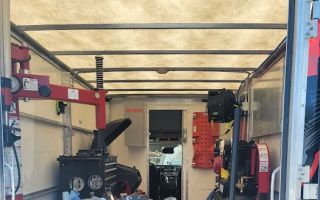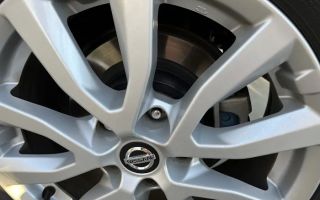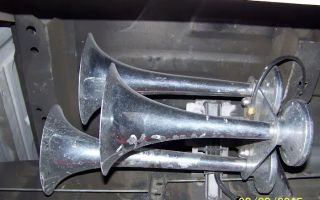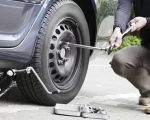- why-your-engine-overheats-and-what-it-means - Why Your Engine Overheats and What It Means
- spotting-warning-signs-before-its-too-late - Spotting Warning Signs Before It’s Too Late
- common-causes-of-car-engine-overheating - Common Causes of Car Engine Overheating
- step-by-step-guide-how-to-fix-car-engine-overheating-problems - Step-by-Step Guide: How to Fix Car Engine Overheating Problems
- real-roadside-stories-and-costly-lessons - Real Roadside Stories and Costly Lessons
- when-to-call-a-pro-and-how-to-prevent-overheating - When to Call a Pro and How to Prevent Overheating in the Future
1. Why Your Engine Overheats and What It Means
An overheating engine is not just a summer annoyance—it’s a critical red flag that your vehicle’s cooling system is failing to regulate temperature. When temperatures rise beyond safe operating limits, metal parts expand, gaskets fail, and in worst cases, the engine can seize completely. Understanding how to fix car engine overheating problems starts with recognizing that this issue is often preventable if caught early.
Engine overheating can result from a variety of factors: coolant loss, failed components, or blocked passages. But regardless of the source, it always means one thing—your engine is running hotter than designed, and prolonged exposure can lead to expensive repairs or total engine failure.
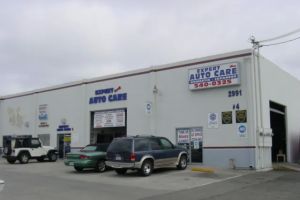
Expert Auto Care
2991 Grace Ln #4, Costa Mesa, CA 92626, USA
2. Spotting Warning Signs Before It’s Too Late
Early detection is key. Most drivers first notice overheating when the dashboard temperature gauge creeps into the red, or when the engine warning light illuminates. But there are subtler signs, including:
- Steam rising from under the hood
- Heater blowing cold air while the engine is hot
- Coolant leaks beneath the car (green, pink, or orange fluid)
- A burning smell or sweet syrupy odor
According to AAA roadside data, over 30% of breakdowns related to overheating could have been avoided by regular checks of the cooling system. Keeping an eye out for these early signs gives you time to act before major damage sets in.

ExperTec Automotive
7680 Talbert Ave, Huntington Beach, CA 92648, USA
3. Common Causes of Car Engine Overheating
Understanding the root cause of engine overheating is critical to finding the right fix. The most common culprits include:
- Low coolant levels: Due to leaks, evaporation, or lack of regular maintenance
- Faulty thermostat: Stuck thermostats block coolant flow, creating heat buildup
- Radiator issues: Clogs, leaks, or fan failures reduce the system’s cooling efficiency
- Broken water pump: Without circulation, coolant can’t reach the engine block effectively
- Blown head gasket: Allows combustion gases into the coolant system, causing pressure spikes
Even something as simple as a worn-out radiator cap can allow coolant to boil and evaporate, starting a dangerous chain reaction. Diagnosing the issue correctly is the first step to resolving it.
4. Step-by-Step Guide: How to Fix Car Engine Overheating Problems
Fixing an overheating engine begins with a calm and cautious approach—especially if it happens on the road. Follow these steps:
Step 1: Pull Over Safely
Turn off the A/C and turn on the heater to help transfer engine heat into the cabin. Pull over and shut off the engine immediately. Never open the radiator cap while the engine is hot—wait at least 30 minutes.
Step 2: Check Coolant Level
Once the engine cools, inspect the coolant reservoir. If it’s low, topping it off with a 50/50 mix of coolant and water can offer a temporary fix. If coolant isn’t visible at all, you likely have a leak.
Step 3: Inspect for Visible Leaks or Damage
Look for coolant leaks, broken hoses, or dripping water from the water pump area. If anything looks cracked, disconnected, or rusted, make note of it for repairs.
Step 4: Restart and Monitor
Start the engine and monitor the temperature gauge. If it begins to spike again, shut the engine off and arrange a tow. A temporary refill won’t fix mechanical failures.
Step 5: Schedule Professional Inspection
Even if your car seems to stabilize, have a technician pressure test the system, inspect the radiator, and check for thermostat or pump failure. If needed, visit Rescue & Towing for expert diagnostics and fast repairs.
5. Real Roadside Stories and Costly Lessons
In 2023, a Florida driver ignored a blinking temperature warning light on a road trip and drove another 40 miles. By the time she reached a gas station, the engine was steaming, and the cylinder head was warped—a $2,800 repair bill. Her mistake? Assuming it could wait until morning.
Compare that to a driver in Oregon who pulled over at the first sign of steam. A broken radiator hose was to blame. The repair cost just under $150, including a tow. That difference underscores the importance of reacting quickly.
Overheating may feel like a hassle, but treating it seriously can mean the difference between an inconvenience and a financial disaster.
6. When to Call a Pro and How to Prevent Overheating in the Future
If you’ve addressed coolant levels and checked hoses but the problem persists, it’s time to get professional help. Call a towing service or a trusted mechanic—especially if you notice:
- Repeated overheating within a week
- Milky oil (a sign of a blown gasket)
- Coolant bubbling or overflowing
Prevention, however, is the real key. Follow these tips:
- Flush and replace coolant every 30,000–50,000 miles
- Replace the thermostat at recommended intervals
- Check belts and hoses during oil changes
- Monitor your dashboard temperature gauge regularly
Many customers at Rescue & Towing share one thing in common: they wish they’d acted sooner. Don’t let a small issue turn into a major repair. Knowing how to fix car engine overheating problems is about more than quick fixes—it’s about paying attention, staying informed, and trusting the right professionals when it counts.




